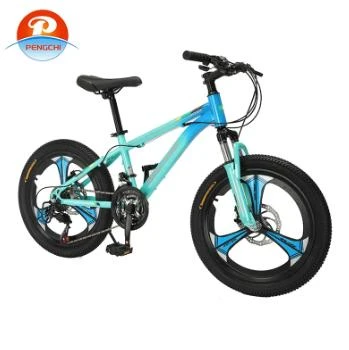
-
 Afrikaans
Afrikaans -
 Arabic
Arabic -
 Belarusian
Belarusian -
 Bengali
Bengali -
 Bulgarian
Bulgarian -
 Croatian
Croatian -
 Czech
Czech -
 Danish
Danish -
 Dutch
Dutch -
 English
English -
 Finnish
Finnish -
 French
French -
 German
German -
 Greek
Greek -
 hawaiian
hawaiian -
 Hebrew
Hebrew -
 Hindi
Hindi -
 Hungarian
Hungarian -
 Indonesian
Indonesian -
 irish
irish -
 Italian
Italian -
 Japanese
Japanese -
 Javanese
Javanese -
 kazakh
kazakh -
 Khmer
Khmer -
 Korean
Korean -
 Kyrgyz
Kyrgyz -
 Lao
Lao -
 Latin
Latin -
 Luxembourgish
Luxembourgish -
 Malay
Malay -
 Myanmar
Myanmar -
 Norwegian
Norwegian -
 Persian
Persian -
 Polish
Polish -
 Portuguese
Portuguese -
 Romanian
Romanian -
 Russian
Russian -
 Serbian
Serbian -
 Slovak
Slovak -
 Somali
Somali -
 Spanish
Spanish -
 Swedish
Swedish -
 Tagalog
Tagalog -
 Thai
Thai -
 Turkish
Turkish -
 Turkmen
Turkmen -
 Ukrainian
Ukrainian -
 Uighur
Uighur -
 Vietnamese
Vietnamese
Feb . 10, 2025 10:16 Back to list
Children's bicycles with auxiliary wheels 3 4 5 6 7 8 9 10 11 12 13 Years Old Girls' bicycles Boys kids bike 12 14 16 20 inch
Choosing the right bike for children is both an art and a science. Parents often find themselves overwhelmed by the plethora of options available today, each promising a sense of adventure and growth for their little ones. Understanding the nuances involved in selecting the perfect bike not only ensures the child's safety but also enhances their learning and enjoyment.
Beyond the physical attributes of the bike, consider the emotional and developmental benefits. Biking fosters a sense of independence and confidence in children. It is not simply a mode of transportation but a tool for exploration and growth. Studies have shown that regular biking enhances cardiovascular health, improves balance and strength, and contributes to a child’s overall well-being. Encouraging children to engage in physical activities such as cycling can lead to a healthier lifestyle, developing habits that can last a lifetime. Expert advice from pediatricians and child development specialists often recommends gradual exposure to biking. Initially, balance bikes are excellent for teaching children the mechanics of steering and balance without the added complexity of pedaling. Once they have mastered the balance bike, they can transition more easily to traditional pedal bikes. Protective gear, particularly helmets, should be non-negotiable, as they significantly reduce the risk of head injuries. Trust is an integral part of the process. Trustworthy brands are those that comply with safety standards and regulations, as established by authoritative bodies like the Consumer Product Safety Commission. Reading customer reviews and seeking recommendations from other parents can provide valuable insights into the reliability and durability of various brands. Lastly, sustainability is an emerging aspect of consumer choice. Eco-friendly bikes made from biodegradable materials or those produced under fair trade practices resonate well with environmentally conscious families. Not only do these choices contribute to environmental conservation, but they also instill a sense of responsibility in children from a young age. In conclusion, selecting the ideal bike for children intertwines practical considerations with developmental benefits. Parents must diligently assess technical specifications, safety features, and brand reputation to secure a bike that aligns with the child's requirements and aspirations. Biking opens doors to adventure and independence, setting the stage for countless cherished childhood memories.


Beyond the physical attributes of the bike, consider the emotional and developmental benefits. Biking fosters a sense of independence and confidence in children. It is not simply a mode of transportation but a tool for exploration and growth. Studies have shown that regular biking enhances cardiovascular health, improves balance and strength, and contributes to a child’s overall well-being. Encouraging children to engage in physical activities such as cycling can lead to a healthier lifestyle, developing habits that can last a lifetime. Expert advice from pediatricians and child development specialists often recommends gradual exposure to biking. Initially, balance bikes are excellent for teaching children the mechanics of steering and balance without the added complexity of pedaling. Once they have mastered the balance bike, they can transition more easily to traditional pedal bikes. Protective gear, particularly helmets, should be non-negotiable, as they significantly reduce the risk of head injuries. Trust is an integral part of the process. Trustworthy brands are those that comply with safety standards and regulations, as established by authoritative bodies like the Consumer Product Safety Commission. Reading customer reviews and seeking recommendations from other parents can provide valuable insights into the reliability and durability of various brands. Lastly, sustainability is an emerging aspect of consumer choice. Eco-friendly bikes made from biodegradable materials or those produced under fair trade practices resonate well with environmentally conscious families. Not only do these choices contribute to environmental conservation, but they also instill a sense of responsibility in children from a young age. In conclusion, selecting the ideal bike for children intertwines practical considerations with developmental benefits. Parents must diligently assess technical specifications, safety features, and brand reputation to secure a bike that aligns with the child's requirements and aspirations. Biking opens doors to adventure and independence, setting the stage for countless cherished childhood memories.
Previous:
Latest news
-
Top Kids Bike with gpt-4-turbo AI for Safe Rides
NewsAug.02,2025
-
Premium Titanium Road Bike: Lightweight & Durable
NewsAug.01,2025
-
Red Black BMX Bike with GPT-4-Turbo AI Tech
NewsJul.31,2025
-
New Red Anti-theft E-Bike | Easy Ride City Commuter
NewsJul.31,2025
-
BMX 20 Inch Bikes for Freestyle & Street | Fat Tire Options Available
NewsJul.30,2025
-
322 High Quality 26 Inch 21 Speed Adult Mountain Bike OEM MTB
NewsJul.29,2025

